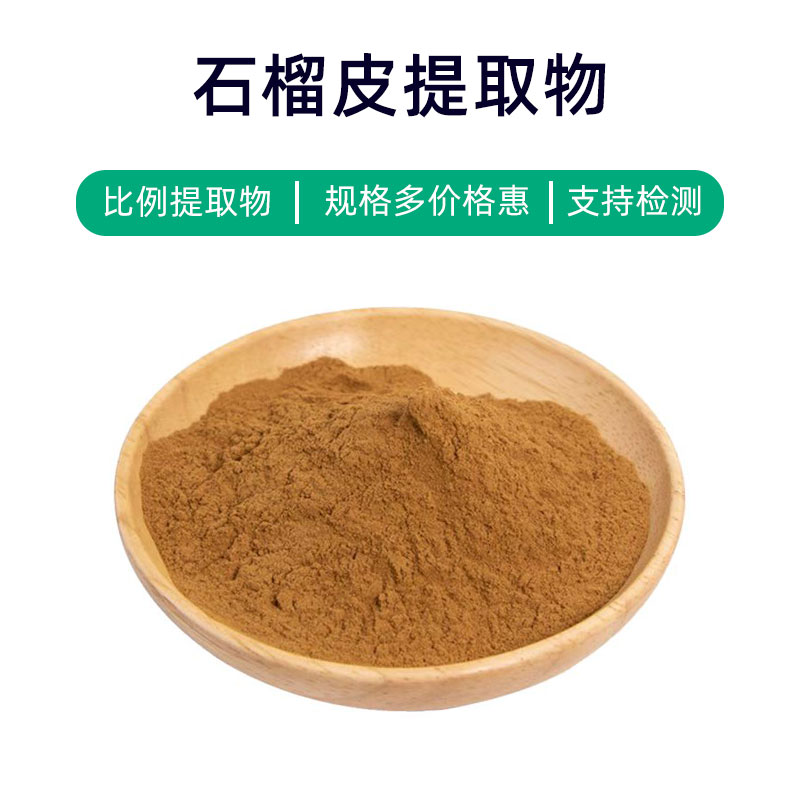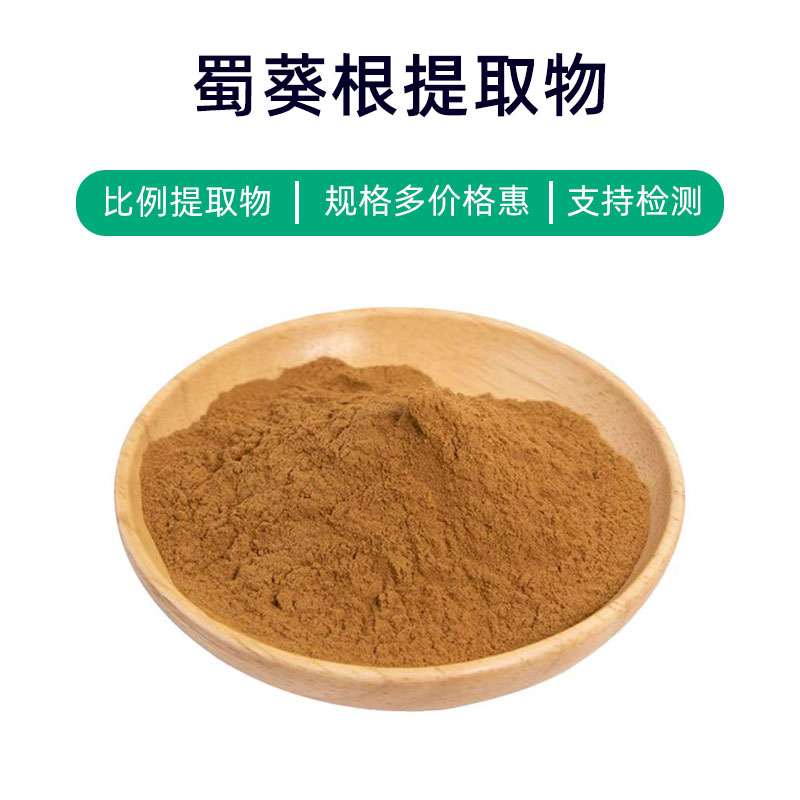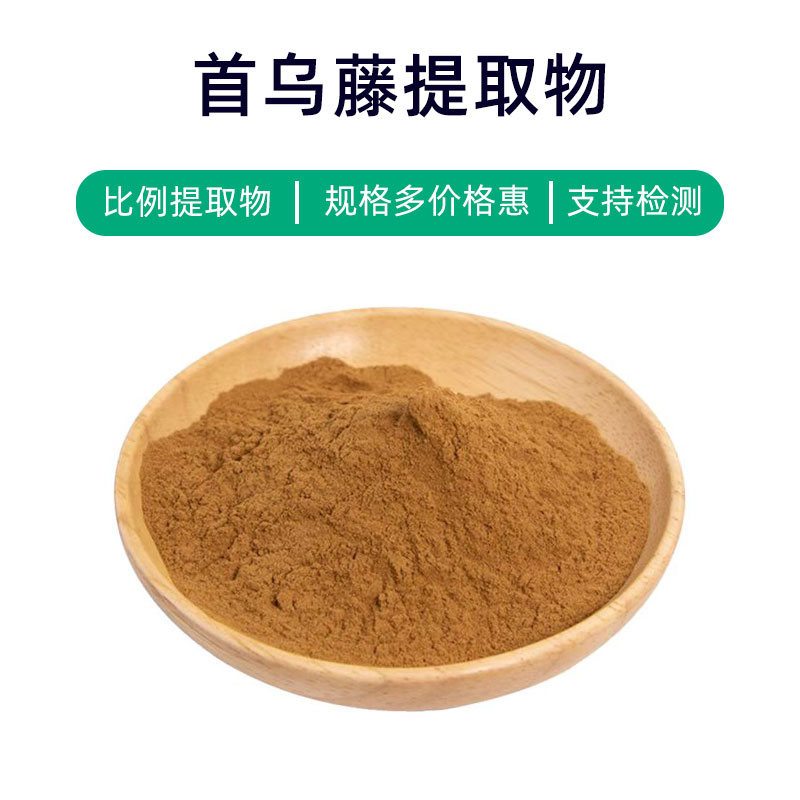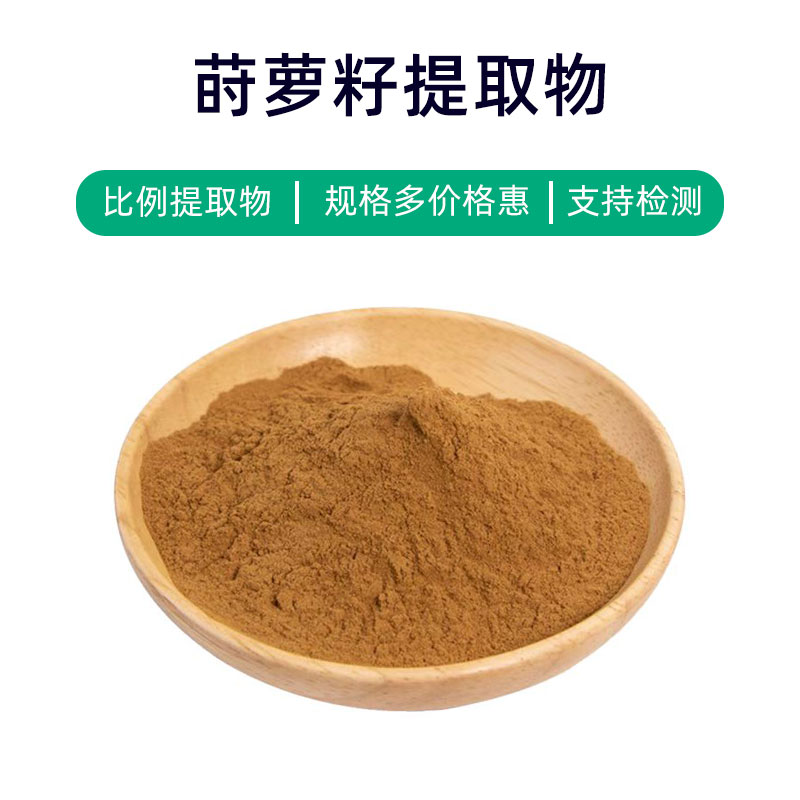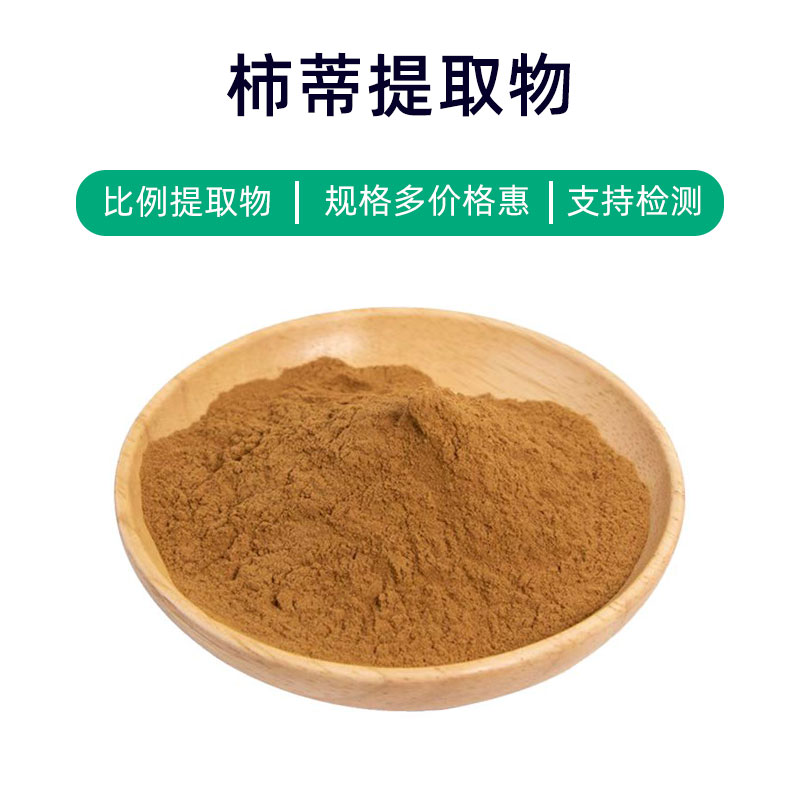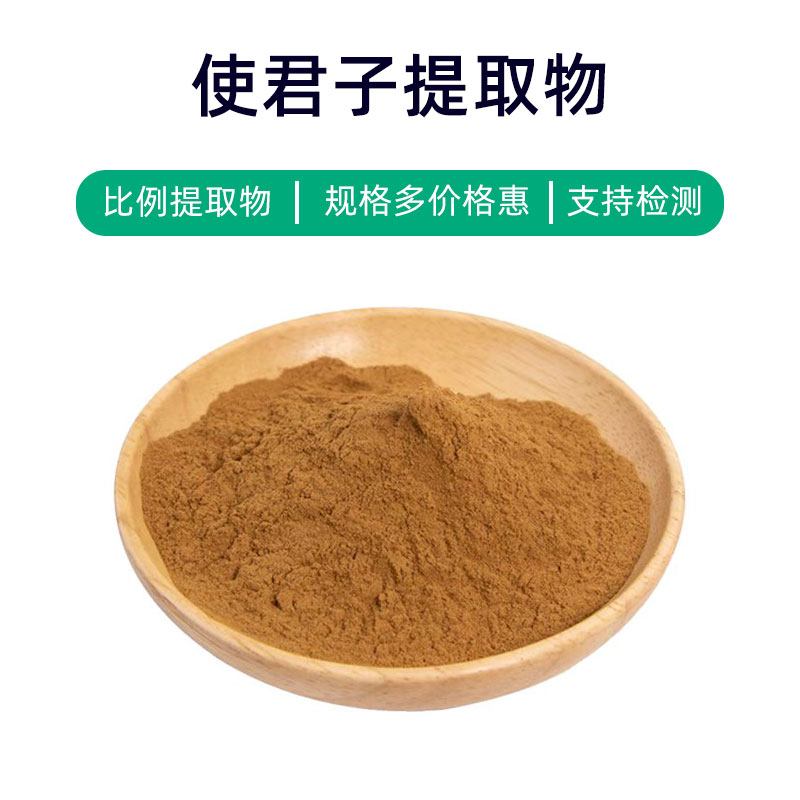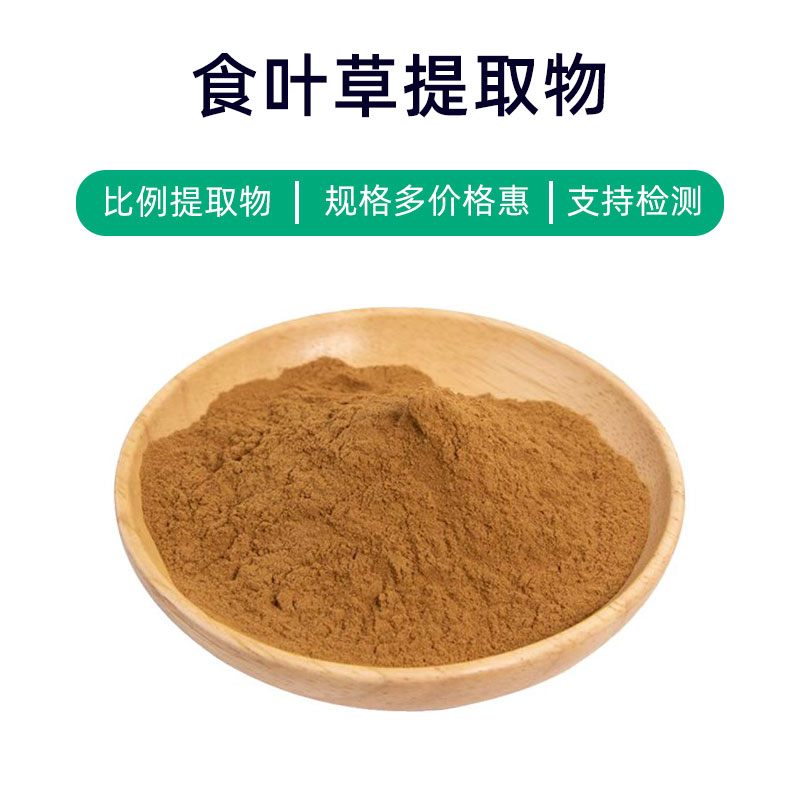Pomegranate Peel Extract Product Introduction
Pomegranate peel extract is a natural plant extract derived from the outer peel of pomegranate fruits, primarily composed of rich tannins, flavonoids, and polyphenols. These components provide pomegranate peel extract with various benefits and applications.
Firstly, pomegranate peel extract exhibits powerful antioxidant properties, which can neutralize free radicals, slow down cellular oxidative damage, and delay aging. Secondly, it has anti-inflammatory and antibacterial effects, helping to reduce inflammation and maintain skin health. Additionally, pomegranate peel extract can improve skin tone and reduce wrinkles, enhancing skin elasticity.
In terms of applications, pomegranate peel extract is widely used in dietary supplements, cosmetics, and pharmaceuticals. In dietary supplements, it is commonly made into capsules or liquid nutritional supplements to improve skin health and provide antioxidant benefits. In cosmetics, it is frequently included in skincare products like creams, serums, and masks to boost moisture, skin lightening, and anti-aging effects. In the pharmaceutical field, pomegranate peel extract is also utilized to create medications such as anti-inflammatory drugs and antioxidants for treating diseases related to oxidative stress.
In summary, as a natural plant extract, pomegranate peel extract has multiple benefits and wide-ranging applications, playing an essential role in dietary supplements, cosmetics, and pharmaceuticals while supporting health and beauty.
Pomegranate Peel Extract Production Process
The production process of pomegranate peel extract typically involves the following main steps:
- Raw Material Collection and Preparation: First, fresh, ripe pomegranates are selected, and the outer peel is removed from the fruit. The peels are usually processed immediately after fruit processing to ensure freshness and the integrity of active ingredients.
- Grinding and Crushing: After collecting, the pomegranate peels are washed and processed before being crushed and ground to increase extraction efficiency and surface area, facilitating the subsequent extraction process.
- Extraction Process: Using suitable extraction methods such as water extraction, ethanol extraction, or supercritical fluid extraction, the ground pomegranate peels are soaked in a solvent to extract active components. It is essential to control parameters such as temperature, time, and solvent concentration during extraction to ensure efficiency and purity of the extract.
- Concentration and Filtration: The obtained solution is concentrated to remove the solvent, resulting in a concentrated extract. Then, filtration and other processing steps are utilized to remove residues and impurities, enhancing the purity and quality of the extract.
- Drying and Grinding: Finally, the concentrated extract is dried to remove remaining moisture, yielding a dry pomegranate peel extract. The dried product may be ground or granulated as necessary to achieve the desired size and form.
- Quality Control: Throughout the production, strict quality control is maintained, monitoring the content of active ingredients and the presence of harmful substances such as microorganisms and heavy metals to ensure the safety, stability, and quality of the product.
In conclusion, the production process of pomegranate peel extract involves multiple stages, including raw material collection, grinding, extraction, concentration, filtration, drying, and quality control, requiring scientific management of each step to ensure the final product's quality and effectiveness.
Pomegranate Peel Extract Effects and Side Effects
As a natural plant extract, pomegranate peel extract is widely used in traditional Chinese medicine and modern pharmacology, exhibiting various effects and benefits. The main effects are as follows:
- Antioxidant Effects: Pomegranate peel extract is rich in polyphenolic compounds, such as anthocyanins, which possess strong antioxidant properties, helping to eliminate free radicals, alleviate oxidative stress, and protect cells from oxidative damage.
- Anti-inflammatory Effects: Studies have shown that compounds in pomegranate peel extract can inhibit inflammatory responses, reduce the release of inflammatory mediators, and provide certain auxiliary treatment effects for inflammatory diseases.
- Antibacterial Effects: Compounds such as ellagic acid in pomegranate peel extract exhibit significant antibacterial properties, inhibiting and killing various pathogenic bacteria, which can be used to prevent and treat bacterial infectious diseases.
- Blood Sugar Regulation: Research indicates that some compounds in pomegranate peel extract can lower blood sugar levels by promoting insulin secretion and enhancing tissue glucose utilization, aiding in blood sugar regulation.
- Lipid Regulation: The polyphenolic compounds in pomegranate peel extract can inhibit cholesterol synthesis and absorption, promote cholesterol metabolism and excretion, which helps lower blood lipid levels and prevents cardiovascular diseases.
- Skin Care and Beauty Effects: Rich in vitamin C and polyphenolic compounds, pomegranate peel extract exhibits moisturizing, antioxidant, and anti-aging effects, making it suitable for skin care products to improve skin texture and delay aging.
- Digestive Promotion: Ellagic acid in pomegranate peel extract can astringe and enhance gastrointestinal mucosa, promote digestive fluid secretion, improving digestive function and alleviating indigestion and gastrointestinal inflammation.
Despite its numerous benefits, it is essential to be aware of potential side effects during use, such as allergic reactions and gastrointestinal discomfort. Thus, it is advisable to follow medical advice or product instructions.
Pomegranate Peel Extract Applications and Dosage
Pomegranate peel extract has a wide array of applications in pharmaceuticals, food, and cosmetics. Below are the applications and recommended dosages in various fields:
Applications in Pharmaceuticals:
- Traditional Medicine Formulations: Pomegranate peel extract is often included in traditional medicine formulations to treat symptoms like diarrhea, indigestion, and oral ulcers.
- Oral Preparations: It can be made into oral formulations such as capsules, granules, or tinctures for gastrointestinal regulation, lipid regulation, and antioxidation.
- Topical Ointments: For topical uses, pomegranate peel extract can be incorporated into ointments or topical solutions for treating skin inflammation, eczema, and other skin issues.
Dosage:
- Oral Use: Generally, adults can take 2-3 grams of pomegranate peel extract capsules or granules per dose, 2-3 times a day.
- Topical Use: Apply the pomegranate peel extract on the affected area as needed, usually 2-3 times daily.
Applications in Food:
- Functional Foods: It can be used to make functional foods such as pomegranate peel tea or extracts to enhance immunity, regulate blood sugar, and lower blood pressure.
- Health Foods: As an ingredient in health foods, pomegranate peel extract can be formulated into capsules or liquids for antioxidation and anti-aging benefits.
Dosage:
- Functional Foods: Pomegranate peel extract may be used in tea bags or as an additive, consumed 1-2 times daily.
- Health Foods: Follow the recommended dosage in the product instructions, typically 1-2 times daily.
Applications in Cosmetics:
- Skincare Products: Pomegranate peel extract is frequently used in skincare products for its antioxidant, whitening, and anti-wrinkle effects, suitable for masks, lotions, and serums.
- Hair Care Products: It can also be included in shampoos and conditioners, helping to improve hair texture and strengthen roots.
Dosage:
- Skincare Products: Use according to product instructions, generally applying in the morning and evening, spreading an appropriate amount on the face or hair.
- Hair Care Products: Apply pomegranate peel extract shampoos or conditioners to hair, massaging and rinsing with water.
In summary, pomegranate peel extract has extensive applications across pharmaceuticals, food, and cosmetics. However, it is crucial to adhere to the product's recommended usage and adjust according to individual needs and physical conditions.
Pomegranate Plant Description, Distribution, and Growth Environment
Pomegranate (scientific name: Punica granatum) is a shrub or small tree native to regions ranging from Iran to northern India, belonging to the order Malvales and the family Punicaceae. The pomegranate tree can reach heights of 5-8 meters, with grayish-brown bark and branching trunks. Its leaves are opposite, oval or lanceolate in shape, leathery, and smooth with a glossy green appearance. The flowers are striking, solitary in leaf axils, showcasing red, orange, or yellow petals, making it a beautiful ornamental plant.
The climate in the native regions of the pomegranate is warm, with strong adaptability, thriving at elevations below 1500 meters, particularly in dry and warm climates. Pomegranates have minimal soil requirements, tolerate drought, but are not suited for barren or poorly drained soil. As such, they are mainly found in the Middle East, South Asia, and Mediterranean regions, including Iran, Turkey, India, Spain, and Greece.
Pomegranate is a prolific fruit tree, producing spherical, juicy, sweet fruits rich in vitamin C, vitamin K, potassium, and other nutrients, making it valuable medicinally. Both the fruit and peel can be used medicinally and in food. Extracts from the peel are widely used in traditional medicine and health products, offering benefits like antioxidation, anti-inflammation, and antibacterial properties. The fruit can be consumed fresh or processed into pomegranate juice and dried fruit snacks.
In essence, pomegranate is a drought-resistant plant thriving in warm climates, primarily distributed in the Middle East, South Asia, and Mediterranean areas. Its fruits and peels possess significant medicinal and culinary value, making them widely applicable in pharmaceuticals, health products, and food industries.
Pomegranate Peel Extract Processing and Storage
The processing of pomegranate peel extract typically includes the following steps: First, fresh pomegranate peels are removed and cleaned, then dried or dehydrated to reduce moisture content. Next, the dried peels are ground into powder or cut into small pieces for further extraction. Extraction methods typically involve water extraction, alcohol extraction, or supercritical fluid extraction techniques. After concentration and filtration steps, purified pomegranate peel extract can be obtained.
For storage and preservation, pomegranate peel extract should be stored in a dry, cool, and well-ventilated area, away from direct sunlight and high temperatures. To prevent oxidation and degradation, it is best to keep the extract in a sealed container and avoid prolonged exposure to air. Proper storage conditions can extend the shelf life of pomegranate peel extract and maintain its medicinal value and stability of active ingredients.
Monica Sun is a seasoned expert in the plant extraction industry with over a decade of experience in research and production. She specializes in the extraction and purification of plant active ingredients, focusing on driving innovation in natural product applications. Monica has participated in the development of multiple functional plant extracts, delivering high-value natural raw material solutions for the health food, pharmaceutical, and dietary supplement sectors.

